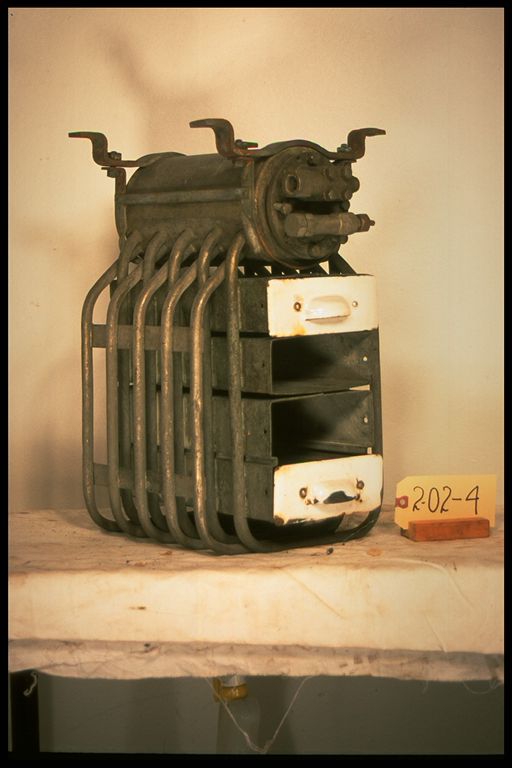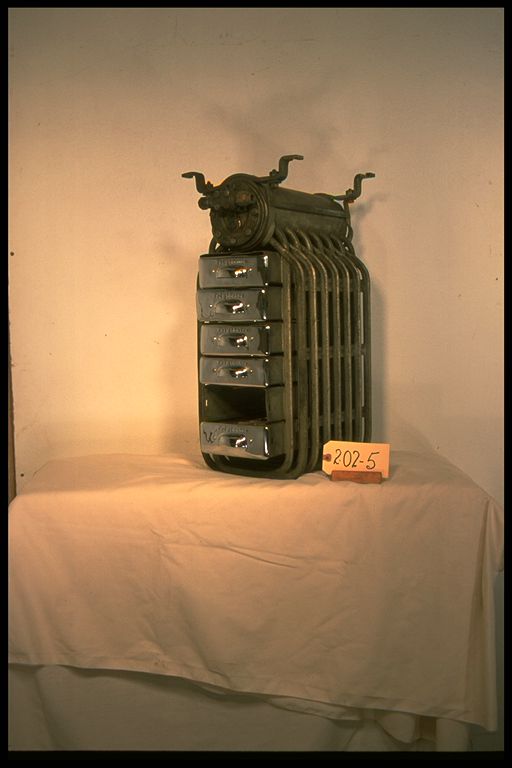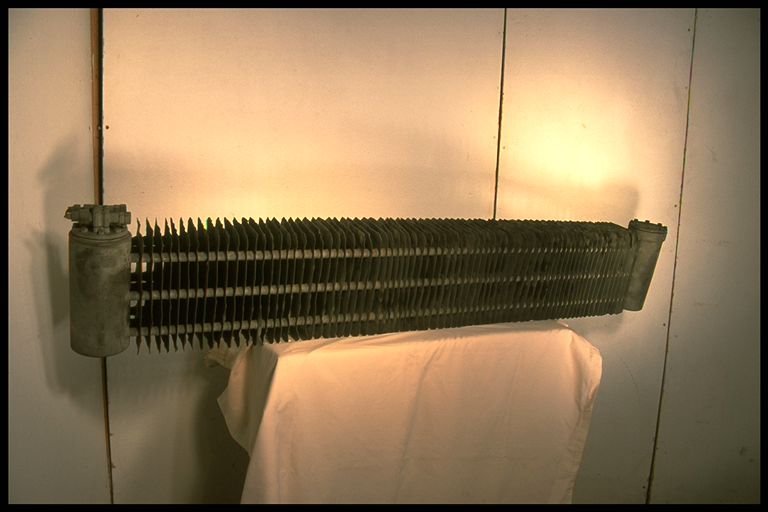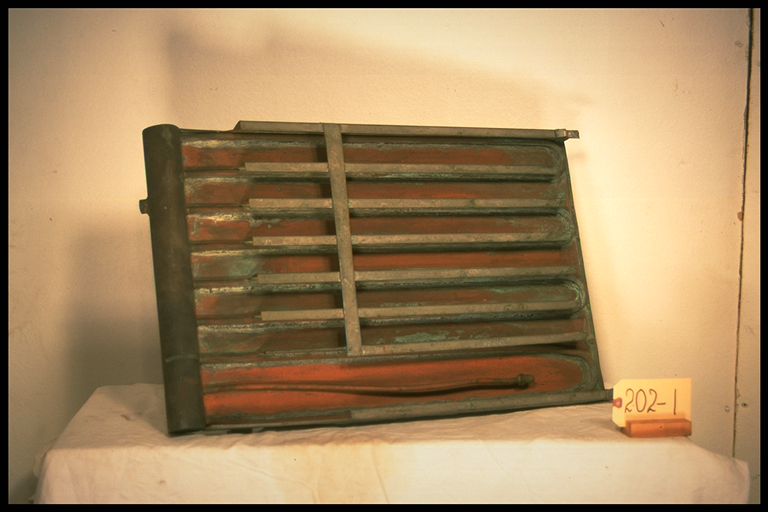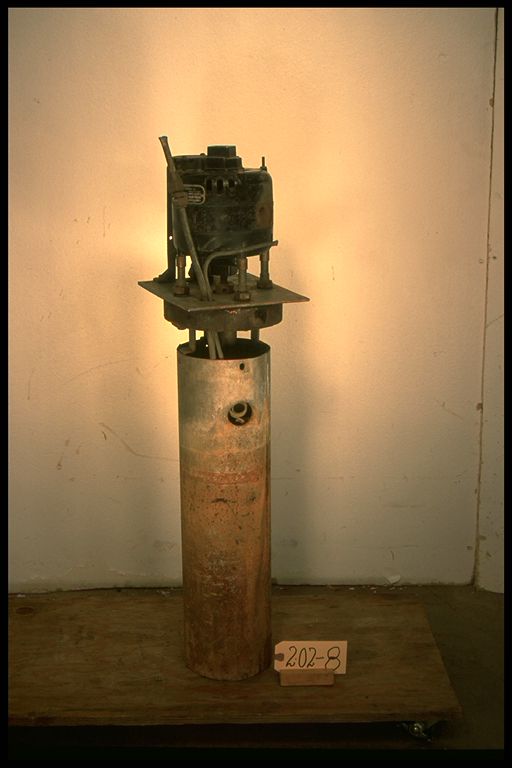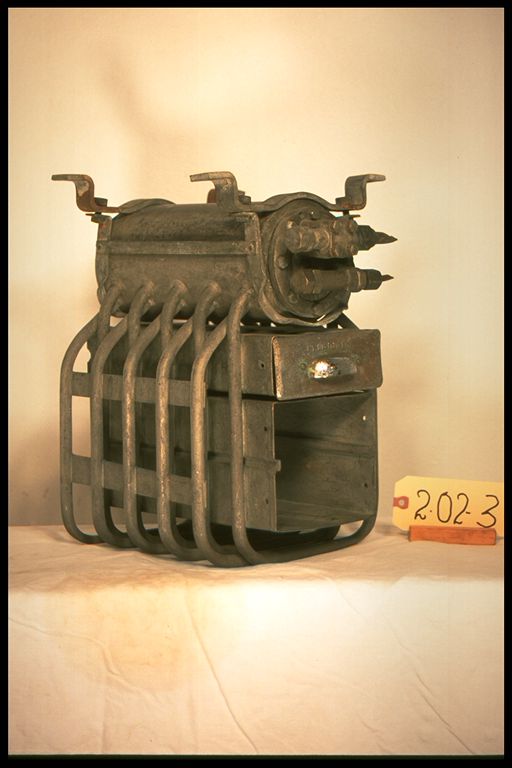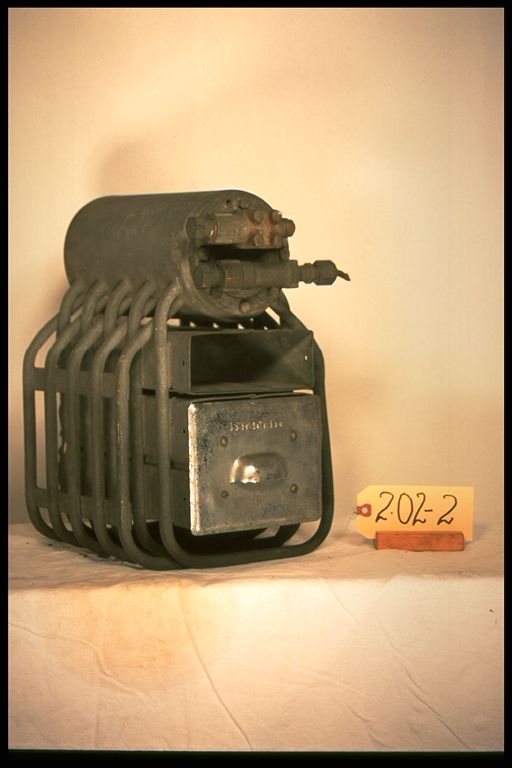2.02-7B: Frigidaire 1926 Early, Heavy Copper Tube and Fin Static Evaporator
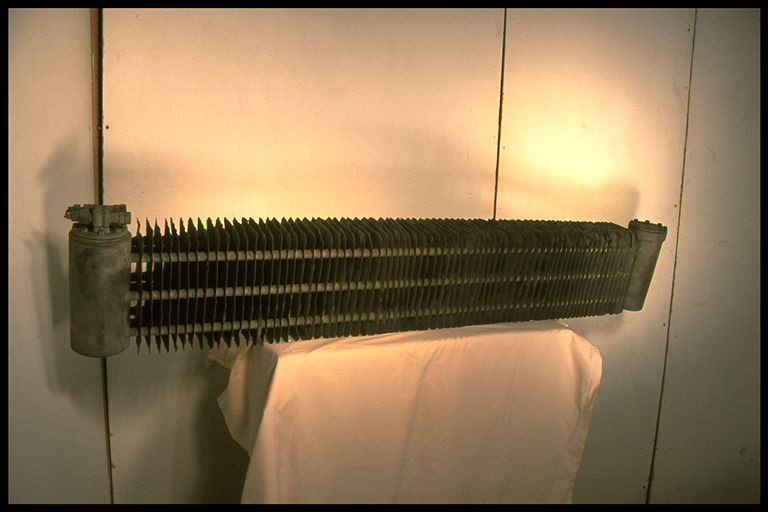
| HHCC Accession No. 2003.028 | HHCC Classification Code: 2.02-7B |
|---|
Description:
Early, heavy copper tube and fin static evaporator with double dip galvanised coating for large ‘walk-in’ refrigerated room, equipped with low-side float and suction line chamber, for low pressure SO2 refrigerant, Frigidaire, Circa 1926
Group:
2.02 Refrigerating and Air Conditioning Evaporators - Commercial
Make:
Frigidaire
Manufacturer:
Frigidaire
Model:
Likely model 560 or 570, See Frigidaire Manual ,SER.-405
Serial No.:
Size:
11x 67x 6’h
Weight:
90 lbs
Circa:
1926, the Frigidaire Manual SER 405, P27, chapter1-A, indicates this product was discontinued in 1928
Rating:
Exhibit, education and research quality, exemplifying early 20th century evaporator design
Patent Date/Number:
Provenance:
From York County (York Region) Ontario, once a rich agricultural hinterlands, attracting early settlement in the last years of the 18th century. Located on the north slopes of the Oak Ridges Moraine, within 20 miles of Toronto, the County would also attract early ex-urban development, to be come a wealthy market place for the emerging household and consumer technologies of the early and mid 20th century.
This artifact was discovered in the 1950’s in the used stock of T. H. Oliver, Refrigeration and Electric Sales and Service, Aurora, Ontario, an early worker in the field of agricultural, industrial and consumer technology.
Type and Design:
Static fin coiling produced on a scale not now seen was a feature of the day. Equipped with low side float refrigerant control, a temperamental flow control technology, yet one well developed for the needs of the period., using the same float designs as appeared on Frigidaires ice maker evaporators , see artifact #025, for example
Construction:
Material:
Special Features:
Matching set of two coils typically used in tandem
Accessories:
Capacities:
Performance Characteristics:
Operation:
Control and Regulation:
Targeted Market Segment:
Consumer Acceptance:
Merchandising:
Market Price:
Technological Significance:
Refrigerated storage rooms for perishable foods were designed predominantly for high pressure refrigerant, commonly ammonia, in the early years of the 20th century. With the successful entry of lower pressure refrigerants, notably SO2, into the market place, the market was significantly expanded, opening it up to smaller commercial installations, which did not require operating engineers. Food stores, dairies and refrigerated warehouses would welcome the trend. So to the public who would see on the market a whole new range of foods for their health and enjoyment.
Industrial Significance:
Socio-economic Significance:
Socio-cultural Significance:
Donor:
G. Leslie Oliver, The T. H. Oliver HVACR Collection
HHCC Storage Location:
Tracking:
Bibliographic References:
Frigidaire manual SER,-405
